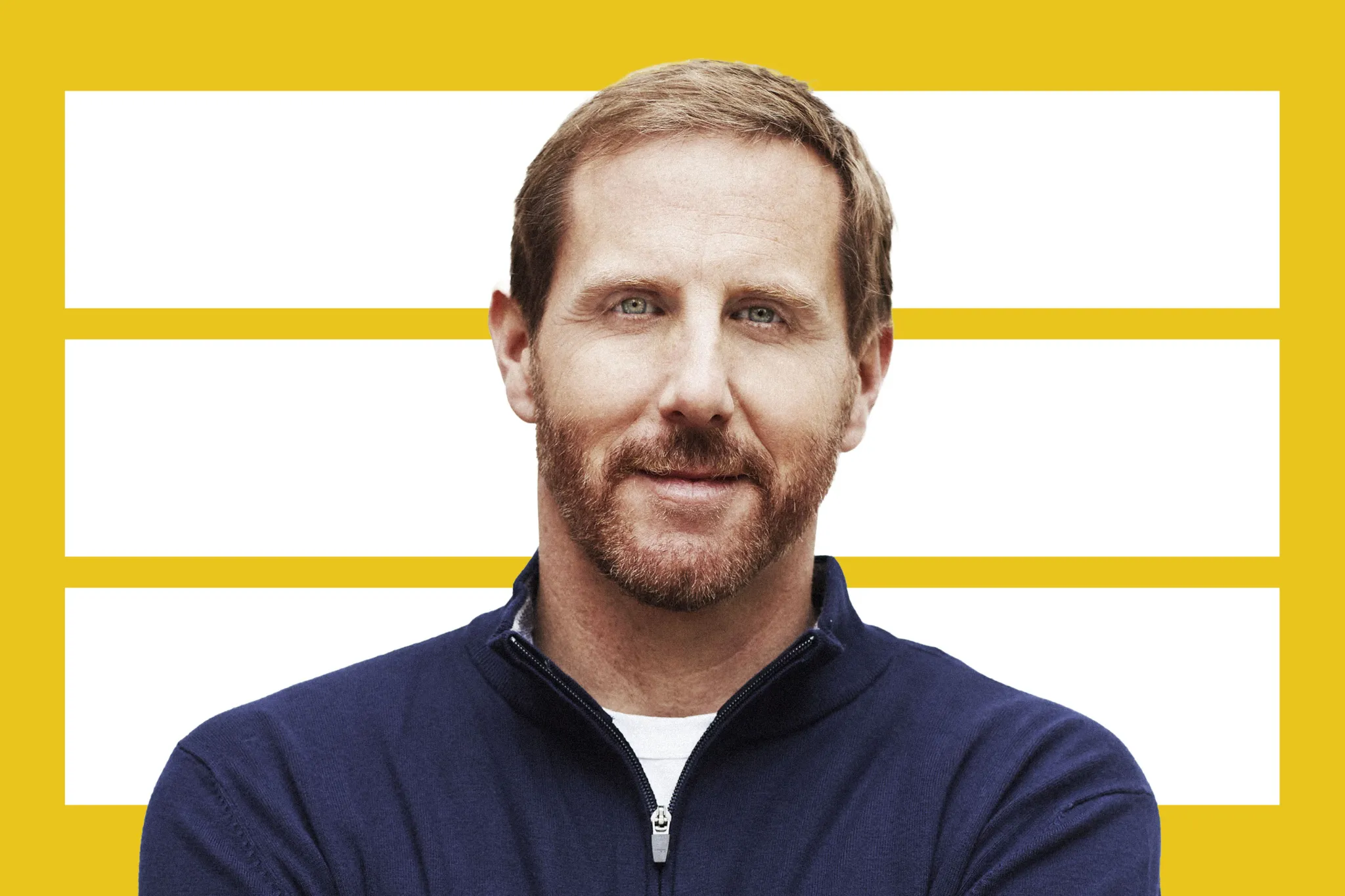Beyond Meat CEO says a smear campaign almost killed his business. Here’s how he’s fighting back
For most vegans, the introduction of Beyond Burgers represents a clear demarcation—of life before, when veggie burgers tasted like wax, and after, when they were not only exciting to eat, but delicious enough to share with your omnivorous friends.
The Beyond Meat brand, founded in 2009 and entering the retail market in 2012, had a quick and early success—through big investors including Bill Gates, high-profile partnerships with outlets from Dunkin’ to KFC, and a first day of trading in 2019 that saw its shares soar by 163%. Plant-based eating, it seemed, was finally having an unbreakable mainstream streak of progress.
But it would not last, due, at least in part, to a 2019 campaign mounted by the Center for Consumer Freedom, a project of lobbyist Richard Berman, who had previously taken aim at the Humane Society and Mothers Against Drunk Driving. The campaign was funded by “restaurants, food companies, and thousands of individual consumers,” many of which remained anonymous, according to the CCF website.
The campaign used prominent TV spots and full-page ads in the New York Times and Wall Street Journal to ask, “What’s hiding in your plant-based meat?” in an aim to paint plant-based burgers and sausages as unhealthier than beef and pork.
And, much to the shock of Beyond Meat founder and CEO Ethan Brown, the campaign seemed to work.
“It was a very difficult period,” Brown tells Fortune, recalling how the accusations clashed with an internal marketing phrase his company had been using as a touchstone at the time: “There’s goodness here.”
“We had such a belief system that … there’s goodness for the human body,” he says of the Beyond products. “There’s goodness for climate, goodness for animals. And then to, all of a sudden, have that all demonized?” The worst part was that “consumers were starting to believe it,” Brown says, recalling a Food Industry Association survey that had found over 50% of people thought that plant-based meat was healthy in 2020—but that by 2022, only 38% did.
“We felt it,” he says. “We felt that, all of a sudden, the dream that you could have a really nice burger that was really good for your body and good for the earth started to really destabilize. And that was due to these campaigns.”
Plant-based meat alternatives constitute an $8.8 billion market, with Beyond, followed by Impossible in 2011, as one of the leaders of this “meatless meat” revolution. And there’s no question that these alternatives are better for the planet, as giving up meat and dairy is one of the single biggest ways that consumers can reduce their impact on the Earth.
The health benefits of meat analogues haven’t always been as crystal clear, even though some research has found them to be more beneficial than meat, and even though various studies have found that plant-based diets are healthier than omnivorous ones.
But while processed meats have been classified as carcinogens and red meat has been classified as a probable carcinogen, Beyond Meat products had their own problem: They were high in saturated fats, which can lead to high cholesterol and cardiovascular issues. That was the result of their reliance on coconut oil, one of only two plant-based sources (along with palm oil) of the unhealthy fats.
It’s why Brown decided that, instead of going up against the anti-vegan campaign’s claims, he would embark upon a new mission: to make the Beyond products “unassailable from a health perspective.”
How Beyond began
Reformulating Beyond’s products was just the next, necessary step in the process for Brown, a D.C. native who became an on-and-off vegetarian through high school and college after spending time on a family farm in Maryland. Seeing that some animals, like pets, were loved, and others slaughtered, he recalls, “was a quandary for me as a child.”
Brown went fully vegan in his 20s, eschewing leather and “trying to be a more consistent, coherent person.” He got his MBA at Columbia. He became a clean energy business development executive—but was thrown off course after hearing an expert speak, through a lecture series his environmental-studies professor father ran in the family’s basement, about how livestock were driving a lot of climate-changing emissions.
“It dawned on me, as a young professional in alternative energy, that I really wasn’t focused on the most powerful thing that I could be focused on,” Brown recalls.
He set his sights on finding a way to improve the veggie burger, eventually working with University of Missouri scientists on the soybean-transformation technology that created its chicken-like strips; this would lead to the creation of the pea-protein-based Beyond Burger, with its famous, meat-like mouthfeel.
They landed in Whole Foods, where sales took off, sending Beyond on a 10-year high—one that Brown could be proud of in front of his two kids (now in college and largely vegan). “Certainly part of the impetus around Beyond Meat was, very early, when they were extremely young, I remember taking them to eat places and thinking, ‘This is not going to change. This is the exact same bad set of choices that I faced.’”
But then came the aggressive takedown campaign.
While others dug in their heels—Impossible responded that “the Impossible Burger has none of the noxious slaughterhouse contaminants that can be found in almost all ground beef from cows,” for example—Brown, who admits he was stunned by the swiftness and effectiveness of the campaign, knew he had to completely change the game once again.
“We took a different approach,” he explains. “We reacted by looking inward and asking, ‘How do we make this product unassailable from a health perspective?’ It’s unassailable from an environmental perspective, so we wanted to create that same unassailable argument on the health side.”
Enter Beyond IV: Simple ingredients, heart-healthy fats
Brown met with leading nutritionists, doctors, and university researchers, examining the ingredients and concocting a healthier reformulation. Notable nutritionist Joy Bauer was brought aboard as a consultant.
“It ultimately came down to restructuring the protein content, reducing the number of ingredients, and then switching out the oils and putting in avocado oil,” he says of the fourth generation Beyond Burger, which offers 21 grams of protein per serving (from peas, brown rice, red lentils, and fava beans), just two grams of saturated fat, and 20% less sodium than the earlier version. (Protein was the source of another setback recently, as the company was named in several class-action lawsuits over allegedly exaggerating the content; it has denied all allegations and settled for $7.5 million “to avoid the costs of further litigation,” says a spokesperson.)
Now Beyond has introduced Sun Sausage, which, rather than aiming to replicate meat products, is intended to “be its own delicious, satisfying protein option.”
All the new products have earned various health seals of approval from the American Heart Association, the American Diabetes Association, Good Housekeeping, and the Clean Label Project. And the changes may be having an effect: The company recently returned to growth, according to third-quarter financial results, with net revenues up 7.6% year over year to $81 million.
Now Brown has called upon other plant-based meat brands to try the same approach, in order to present a strong, united front.
“If we’ve gone to all this effort to clean everything up and just be as unassailable as possible and the rest of the category isn’t doing that, it makes it harder,” he says. “So we’re encouraging everybody to, like, shine a light on your process. Shine a light on your ingredients and make whatever changes you need to make.”
Brown has long said that part of what’s needed to support plant-based-food makers in America is a reshifting of government subsidies away from those that heavily favor the meat and dairy producers (which receive around $38 billion a year from the federal government). But without that, he’s relying on consumers.
“I do think this has always been about us and the consumer. I think that the government has played a poor role in people’s nutrition,” he says. “I mean, you go into the supermarket and it’s basically an assault on your health. So I don’t think we can wait for the government to do things that will propel this.”
Looking ahead, Brown is confident about getting across the message about the “clean and beautiful process” of Beyond’s new products, he says. It involves fava beans being harvested, milled into flour, and placed in an air chamber to separate the starch and protein; then the protein is heated and cooled to create structure and mixed with oil, natural flavor, and natural coloring from pomegranates and beets.
“That’s the entire process. That’s it,” he says. “Juxtapose that with what a pig goes through to become a piece of meat—plus feces, diseases … Our process is clean and beautiful. The other process is full of horrible things, and yet we’re the ones who are on our heels, fighting.”
More on nutrition:



